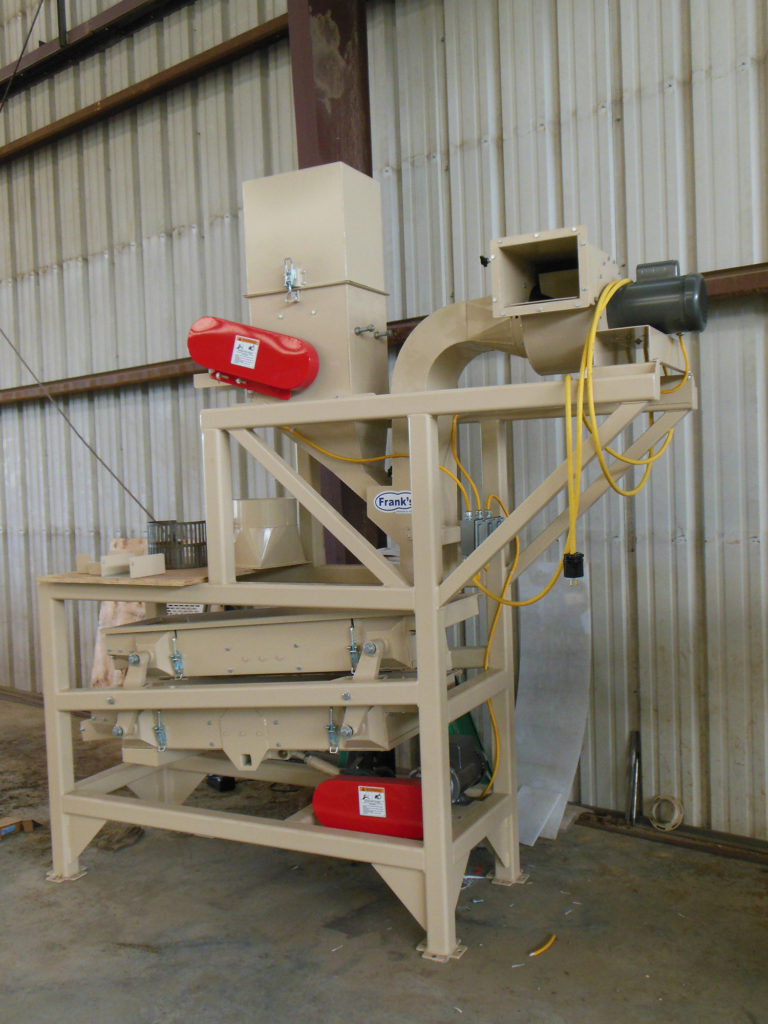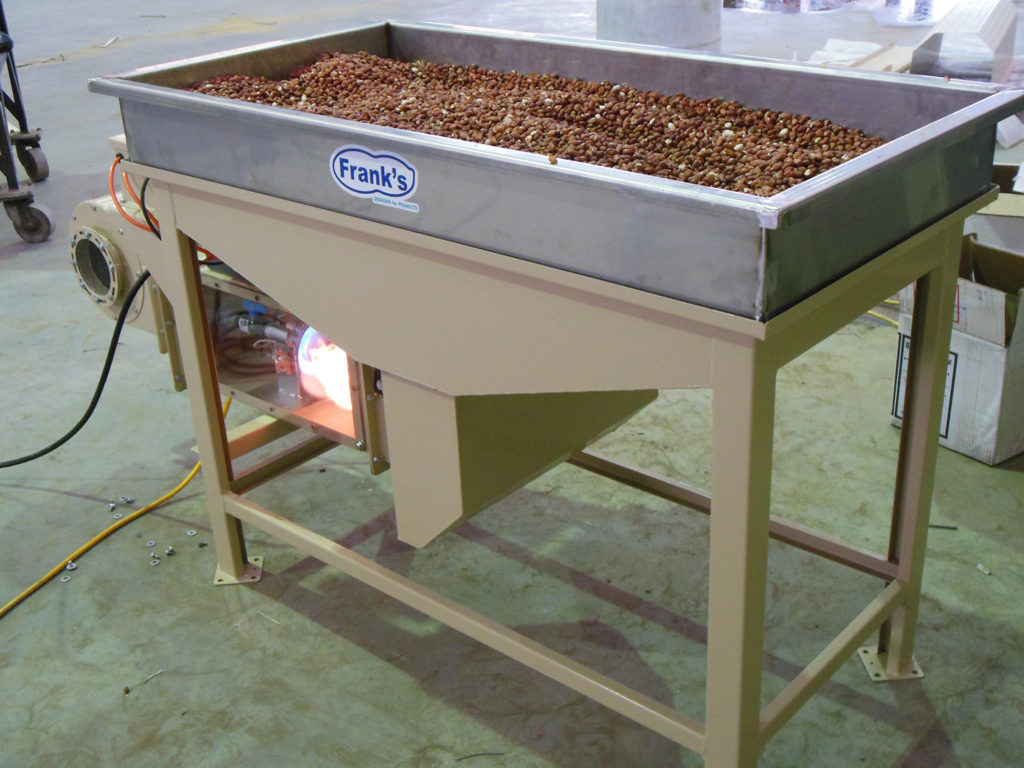Frank equipped a facility in Jamaica.
The equipment included:

A 650kg two-stage sheller.

A white roasting table which is designed to dry peanuts from the proper storage moisture to between 4.5% to 5% moisture at a low temperature in preparation for blanching. It uses a 1-horsepower motor and either propane, butane or natural gas and can process up to 300 pounds of peanuts per batch. After the nuts reach the proper moisture, the burner is turned off and the nuts cool in place. The machine operator then can use a handle to tilt the pan and allow the nuts to flow by gravity into a container.
A splitter/blancher is used to split kernels and remove the skins. This process is done after the nuts have been white roasted or dried down to between 4.5% and 5% moisture. This process exposes any inner damage in nuts, which can then be sorted out, reducing the chance that nuts high in aflatoxin remain in the batch.
The finish roaster performs the final roasting process before nuts are used as snacks or to make peanut butter. A panel in the simple drum is removed for nuts to be placed inside. After roasting is complete, nuts fall by gravity onto a cooling table top, which is placed on the cooling table base while the next batch of nuts go into the roaster.
A cooling table allows roasted peanuts to cool after they are roasted in a finishing roaster. A stainless-steel pan is placed onto a dolly, rolled under the finishing roaster to be filled and then lifted onto the cooling table frame where air is pulled through from the top. This allows the hot exhaust air to be blown outside through a wall.